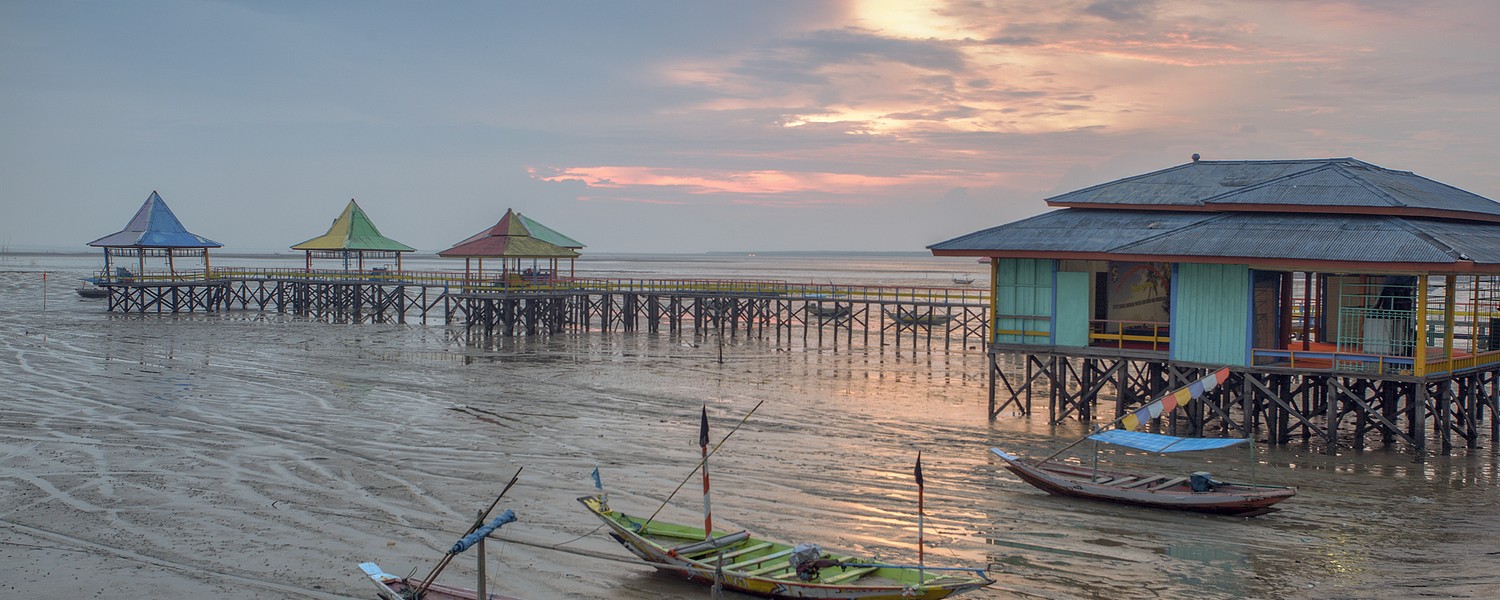
Provided by:
Andreas Hie/Shutterstock.com

Our travel guides are free to read and explore online. If you want to get your own copy, the full travel guide for this destination is available to you offline* to bring along anywhere or print for your trip.
*this will be downloaded as a PDF.Price
€4,95
The City
The guide was updated:
For centuries, Surabaya has attracted immigrants from the Javanese hinterland, the neighbouring island of Madura, and from all the islands of Indonesia. As a result, the city is an ethnic melting pot, including an Arab quarter founded by traders from the Middle East, and a Chinese quarter inhabited by the descendants of traders who settled here more than five centuries ago.
On the south bank of the Kalimas River estuary, Surabaya is a fast-growing modern city: the second largest in Indonesia and one of the country’s major centres for shipbuilding, heavy manufacturing and light industry. It is also a major financial centre, and ambitious new developments for the future include the construction of Southeast Asia’s longest bridge, linking the city to the island of Madura.
The pace of life in the bustling city centre can be overwhelming for the first-time visitor. Limousines, taxicabs, buses, bemo minibuses and becak scooter-taxis jostle for space on the busy avenues, where gleaming hotel, apartment and office towers dominate.
A few blocks inland from the waterfront, Kampung Arab (Arab Quarter), is a labyrinth of old-fashioned chophouses and narrow, colourful streets reminiscent of the city’s mercantile past. Chinatown straddles Jalan Kembang Jepun.
On the south bank of the Kalimas River estuary, Surabaya is a fast-growing modern city: the second largest in Indonesia and one of the country’s major centres for shipbuilding, heavy manufacturing and light industry. It is also a major financial centre, and ambitious new developments for the future include the construction of Southeast Asia’s longest bridge, linking the city to the island of Madura.
The pace of life in the bustling city centre can be overwhelming for the first-time visitor. Limousines, taxicabs, buses, bemo minibuses and becak scooter-taxis jostle for space on the busy avenues, where gleaming hotel, apartment and office towers dominate.
A few blocks inland from the waterfront, Kampung Arab (Arab Quarter), is a labyrinth of old-fashioned chophouses and narrow, colourful streets reminiscent of the city’s mercantile past. Chinatown straddles Jalan Kembang Jepun.


